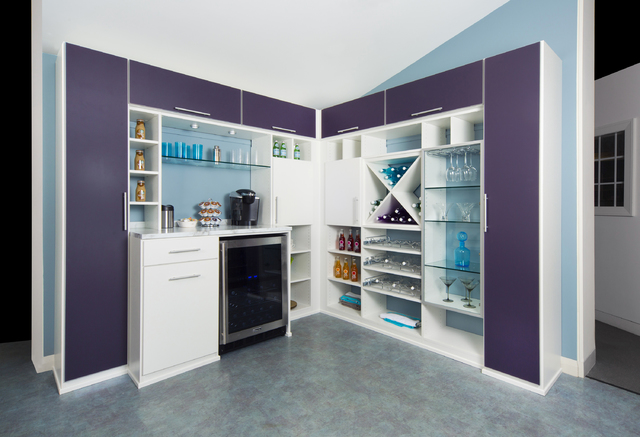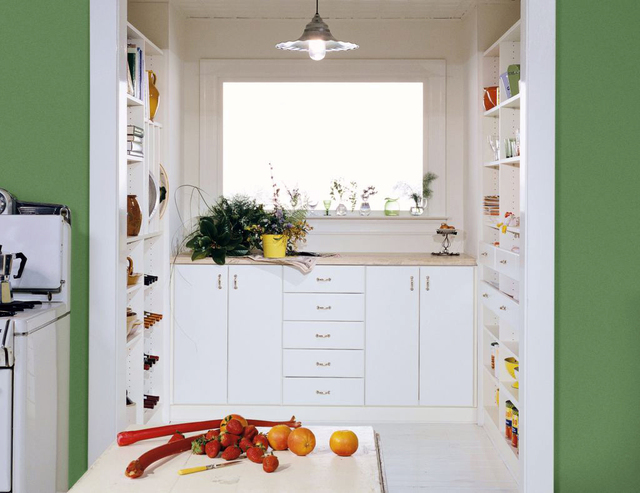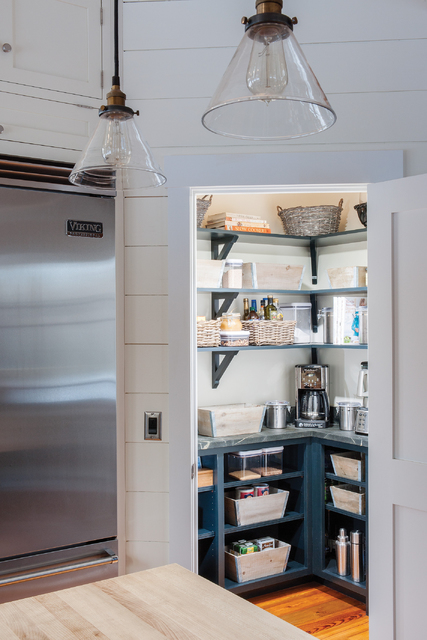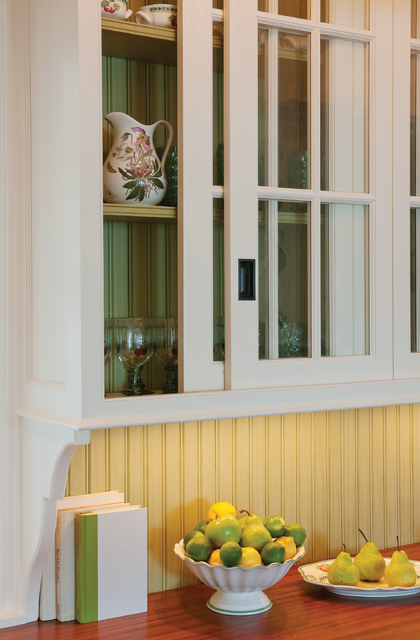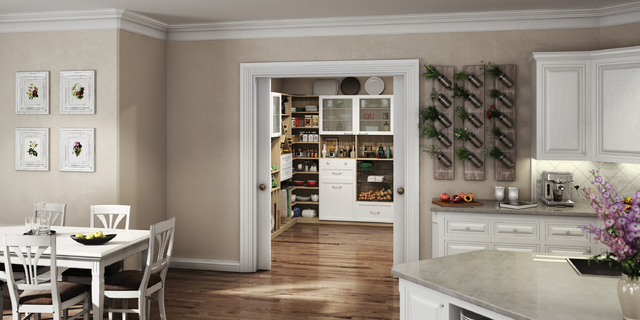Teresa Keller used to joke that she was pantry-challenged. She often relied on a flashlight to search the deep, dark cupboard that held her canned goods and other food items. ADVERTISING Teresa Keller used to joke that she was pantry-challenged.
Teresa Keller used to joke that she was pantry-challenged. She often relied on a flashlight to search the deep, dark cupboard that held her canned goods and other food items.
When she and her husband, Dave, decided to build a home in Sunbury, Ohio, a proper pantry was a priority.
“I brought it up to the builder,” said Teresa Keller, who moved into the new house in October. “I told them I’ve got to have this.”
The Kellers’ new “super pantry” is a walk-in, with plenty of quality shelving to store drinks, trash bags and other household goods bought in bulk. One shelf is dedicated to snacks for the grandchildren. A small door connects it to the garage, so groceries can be unloaded easily.
“At a certain price point, it’s what people are expecting — more storage,” said Ed Snodgrass, vice president of P&D Builders in Delaware, Ohio, which built the Kellers’ house.
Many new homeowners are asking for larger pantries, said Kermit Baker, chief economist for the American Institute of Architects in Washington, D.C. In a recent survey by the group, 43 percent of residential architects reported that customers placed an increased emphasis on pantry space.
Besides storing food, some of the newer, bigger pantries offer storage for china and serving pieces that are used just a few times a year. Some include spaces for toasting bread, brewing coffee and chilling wine. Others have spots for laptops, or sinks for prepping food and washing pets.
Open floor plans, building costs and big-box stores, where people buy cases of water and months’ worth of paper towels, are driving the trend, industry experts said.
“The ‘super’ pantry is a backlash to the open floor plan,” said Amy Beth Cupp Dragoo, an interior designer who works in New York City and Litchfield County, Connecticut. “People have been living in the open concept house long enough now to know that if the kitchen is messy, the whole place feels messy.”
Pantries allow them to stow kitchen items out of sight.
Homeowners no longer feel the need to leave their high-end mixers and coffee makers on the counter, added Bob Vila, the longtime home-improvement TV show host who now dispenses advice at www.bobvila.com .
“There was a generation for whom all of these things were brand new luxuries and they wanted to show them off,” he said.
Now the emphasis is on decluttering.
Builder Michael Menghini gets more and more requests for electrical outlets in pantries. “People want to leave their appliances out, they just don’t want to leave them on their counters,” said Menghini, president of Covenant Custom Homes in Overland Park, Kansas.
Storing appliances, large pots and serving pieces in a walk-in pantry also saves money, Vila said. It’s cheaper to install open shelving in a pantry than to build more kitchen cabinets, which require counter tops and hardware.
“I have been a booster of the concept of pantries for as long as I can remember,” he said. “It minimizes the amount of money spent on kitchen cabinets.”
In older homes, finding space for pantries can be difficult. Many layouts will not accommodate them.
One idea is to create space by installing kitchen cabinets that stretch all the way to the ceiling, Vila said. Even if they are hard to reach, they can hold things you don’t use regularly. Another option: Add cupboards in the garage for appliances and non-food items.


